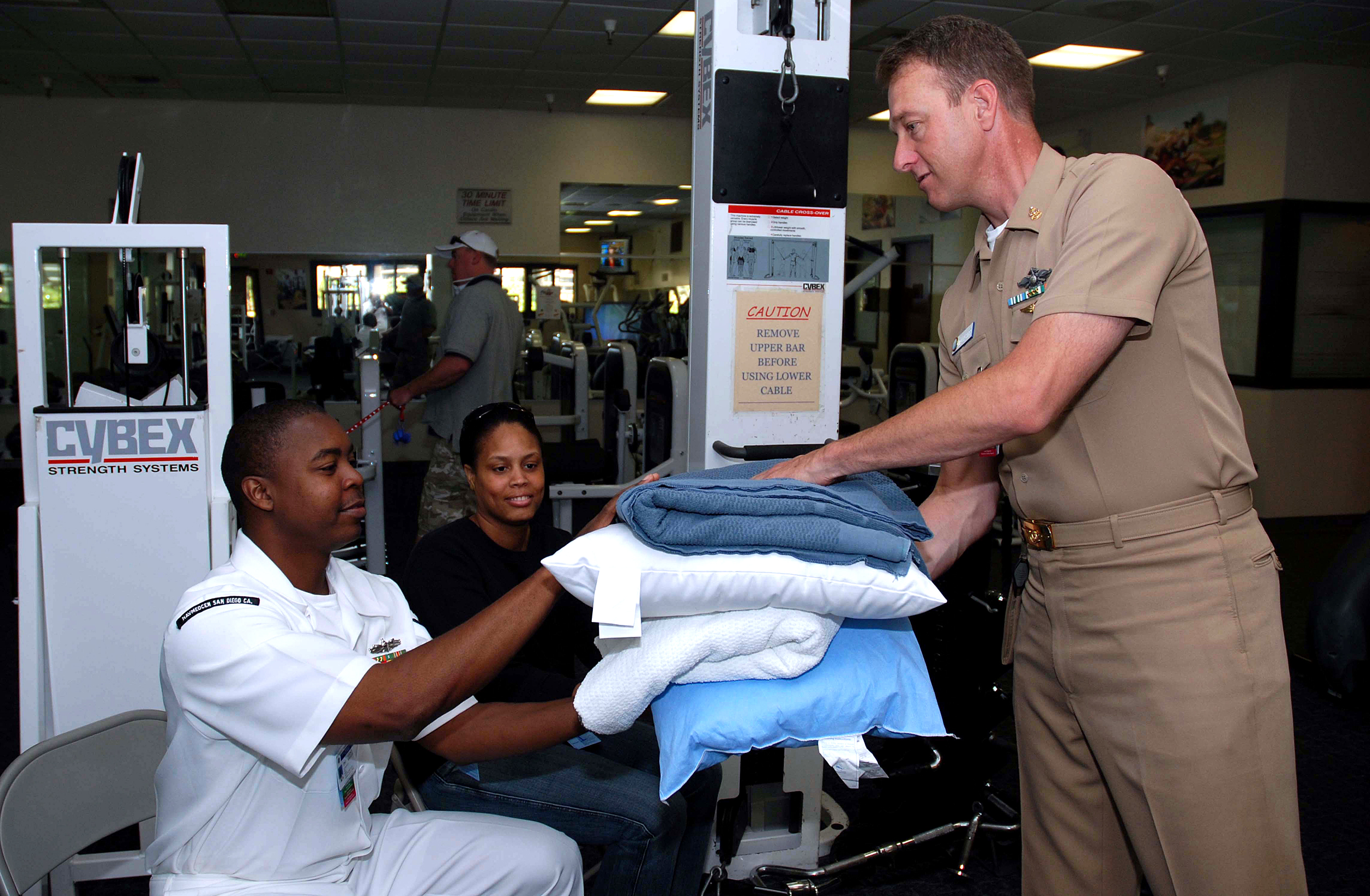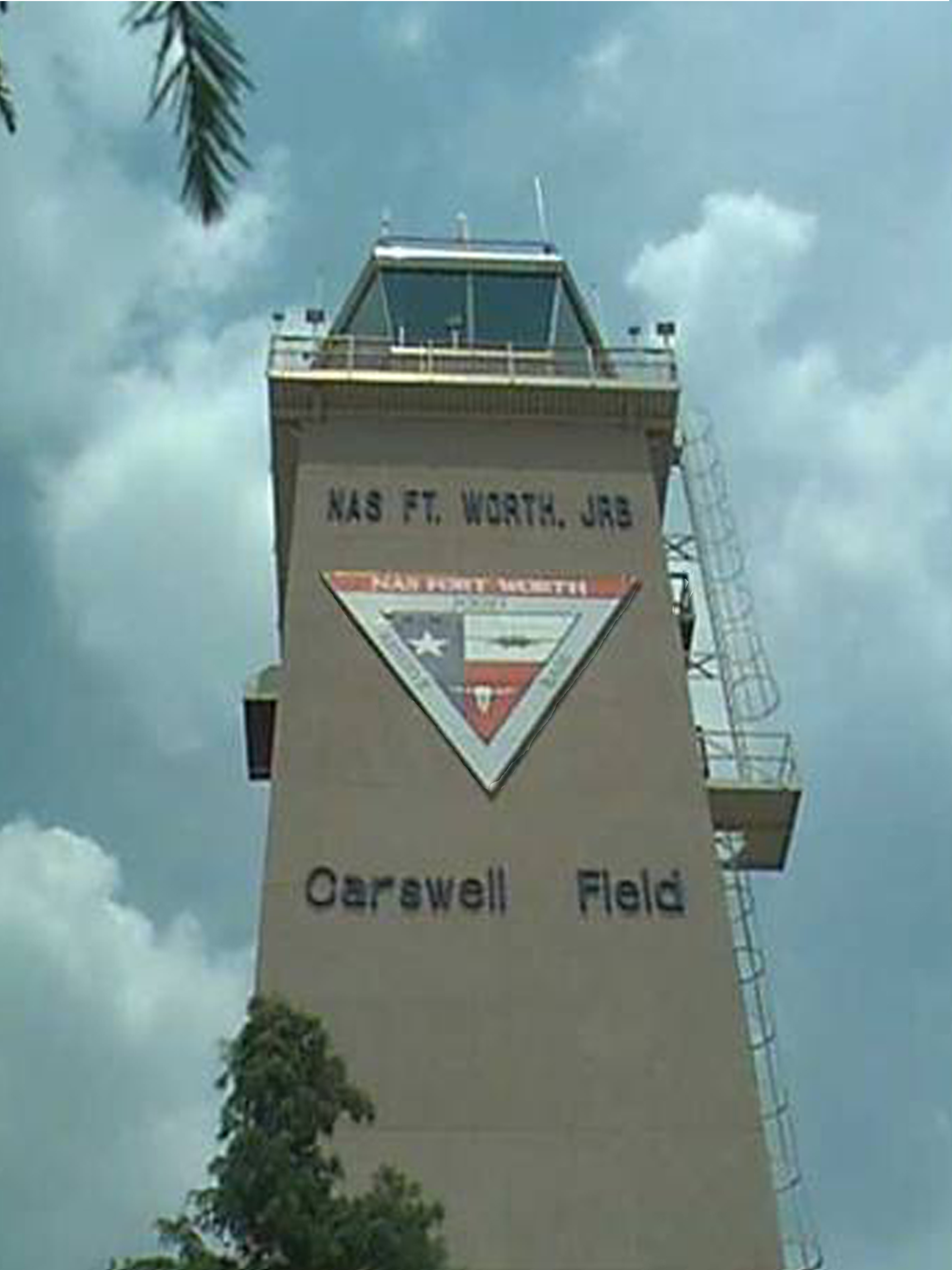Naval Air Station Dallas - 32°46′09″N 097°26′30″W / 32.76917°N 97.44167°W / 32.76917; -97.44167 (Joint Naval Air Station Fort Worth) Coordinates: 32 ° 46'09 "N 097 ° 26'30" W / 32.76917 ° N 97.44167 ° W
(IATA: FWH, ICAO: KNFW, FAA LID: NFW) includes Carswell Field, a military air base located 5 nautical kilometers (9 km; 6 mi) west of the business district of Fort Worth, Tarrant County, Texas , United States. . This military airfield is operated by the United States Navy Reserve.
Naval Air Station Dallas
It is located in the city of Fort Worth, Westworth Village and White Settlemt in the west part of the city of Fort Worth.
Local Reservists And Dallas Mavericks Commit To Community Service
NAS Fort Worth JRB succeeds the former Naval Air Station Dallas and includes other Reserve commands and activities, primarily those of the Air Force, which resided at the facility known as Carswell Air Force Base, formerly Strategic Air. The Area Command (SAC) was later transferred to the Air Combat Command (ACC).
United States Navy headquarters and operating units are located at NAS Fort Worth JRB, including the Naval Air Reserve's air wings and squadrons, intelligence commands, and the Seabees.
The headquarters of the Third Air Force (10 AF) and the Air Force Reserve Command's 301st Fighter Wing continue to be based at the facility, along with the 136th Airlift Wing (136 AW) of the Texas Air National Guard. The Marine Corps, various aircraft groups and various US ground units. The Marine Corps Reserve is also stationed at NAS Fort Worth JRB.
Aircraft types originally based at NAS Fort Worth JRB were the F-14 Tomcat, F/A-18 Hornet, C-9B Skytrain II, C-130 Hercules, and KC-130 Hercules from the former NAS Dallas, s 'joins F-16 Falcon fighter jets previously stationed at the facility when it was known as Carswell Air Force Base and later as Carswell Air Force Station.
U.s. Navy: Naval Air Station (dallas, Texas) G27
Aircraft currently based nearby are the Navy's Naval Air Reserve C-40 Clipper transport aircraft, the Air Force Reserve Command's F-16 Fighting Falcon fighters, and the C-130 Hercules air transport aircraft from the Texas Air National Guard and the Marine Corps F. /A -I- 18 Hornet fighter aircraft and KC-130 Hercules airlift and transport aircraft for the Corps Reserve marines Indeed, the US Army has also established a squadron of RC-12 Guardrail aircraft at NAS Fort Worth JRB.
Carswell Air Force Base was named for USAAF Major Horace S. Carswell, Jr. (1916–1944), who received the Medal of Honor. Commander Carswell was returning from an attack on a Japanese ship in the South China Sea on October 26, 1944 when he attempted to rescue a crewman who had parachuted down. He remained at the controls of his crippled bomber and was killed while shooting down a B-24 Liberator near Tungch, China. The foundation was named in his honor on January 29, 1948.
Carswell's background dates back to the early years of aviation. After the United States entered World War I in April 1917, General John J. "Blackjack" Pershing invited the British Royal Flying Corps (RFC) to establish training camps in the southern United States where the climate warmer would be more conducive to flying. throughout the year. In June, the War Department inspected 6 sites around Fort Worth, Texas, which had been provided by the Chamber of Commerce. In August, the War Department signed contracts with the RFC for 3 sites around Fort Worth. Known as the Flying Triangle, these locations were Hicks Field (#1), Barron Field (#2), and Brook (later Carruthers) Field (#3) depending on their locations. In April 1918 this airfield was turned over to the United States Air Force as a training ground for American pilots. Hundreds of pilots learned their basic and essential flying skills at these war airfields in the Fort Worth area. They were closed in 1919 when war broke out.

In 1940, the city of Fort Worth applied to the Civil Aeronautics Administration (CAA) for the Air Force's first pilot training facility. In May, General Jacob E. Fickel visited Fort Worth on a tour of inspection. Fickel had learned to fly at Carruthers Field in 1918. At the same time, the Fort Worth Chamber of Commerce was trying to convince aircraft manufacturers to build an aircraft assembly plant in the area. Allied Airlines, which wanted to build in the area, proposed to the Air Corps that they jointly build an airfield near the heavy explosives plant they wanted to build in Fort Worth. On June 16, 1941, President Franklin D. Roosevelt approved $1.75 million to build an airfield next to the United factory. The military wanted the airfield repaired as soon as possible before the plant could be put into production, and construction of the airport "Lake Worth Bomber Plant" began immediately.
Local Reservists And Dallas Mavericks Commit To Community Service > 301st Fighter Wing > Article Display
However, after the attack on Pearl Harbor, the Army changed its plans and instead of being a base of operations, "Tarrant Field" as the center was called a bomb training school.
The first unit assigned to the base was the Army Air Corps Training School on 1 July 1942.
With the first flight assigned to the school in August. On July 29, the base was again designated, this time as Fort Worth Army Air Field.
Oblique aerial photo of Fort Worth Army Air Field in 1945, looking east to west. The technical area of the airfield is on the east side of the north-south runway, with the facilities for the construction of Consolidated-Vultee (later Convair) aircraft on the west side.
Us Navy Ship's Service Air Station Dallas Texas Military Naval Matchbook Cover
The Army Air Forces Combat Crew School (later renamed the Army Air Forces Pilot School, Specialized 4-gine) took major command pilot training degrees from command and experienced pilot of 2 engines, and trained them to fly B-24 Liberator. The school was officially opened on October 12, 1942
And was under the control of the 34th Flying Training Wing at San Angelo Army Air Field, Texas.
The school was initially equipped with B-24Ds that were based on the runway of Consolidated; later upgraded to B-24Es

Which were then manufactured at Consolidated's Willow Run plant in Michigan, were moved to the Fort Worth plant for final repairs.
Vintage Matchbook Cover Matchcover Military Us Naval Air Station Dallas Tx
During training, nine crew members were assigned to each aircraft, and the crew ate, slept and trained together 24 hours a day. This allowed the crew to learn the technical skills needed to operate the aircraft, as well as the mindsets and reactions of other crew members. Every day they trained five hours in the air and five hours on the ground. Each class lasted four and a half weeks.
Training officers introduced the Bomb Approach School in October 1943, combining co-operation between pilot and bombardier. In addition, 9000 WAC Company of the Wom's Army Corps were deployed to the control tower and communications office of the base.
In late 1944, B-24 training was discontinued at Fort Worth AAF, replaced by the B-32 Dominator Flight Crew Conversion Training School. Command training pilots were flown to United's manufacturing facility in San Diego to familiarize themselves with the Dominator,
Which was intended as a fixed body of the B-29 Superfort; just as the B-17 Flying Fortress was paired with the B-24 Liberator.
Master Plan Shows Potential Of Former Dallas Airfield
The first B-32 arrived at Fort Worth in September 1944, but was at the conversion plant until January before being released from training school. In 1944, Consolidated delivered only five production aircraft; by comparison, the B-29 had been flying in combat for almost six months. The military was not happy with the Dominator and the production problems it was facing.
40 TB-32 trainers were produced for the training program to continue. Prospective B-32 pilots undergo 50 hours of TB-32 training, and pilots receive 25 hours of flight time and 25 hours of observer training.
Ultimately, the lack of equipment meant that B-32 training at Fort Worth was never fully accomplished, and after V-J Day, officials ended the B-32 training program.

In November 1945, control of the Fort Worth AAF was transferred to the Second Air Force, which established the 17th Bombardmt Operational Training Wing at the base, equipped with B-29A Superfortresses.
New Life For Hensley Field
The Air Force decided to keep Fort Worth as a permanent airfield, and in 1946, built an additional 8,200-foot north-south heavy duty airstrip for future use.
The number of B-32s completed at the Consolidated plant reached 74 production aircraft, and TB-32 trainers, many of which were in the field. These were ordered to be airlifted from Fort Worth directly to storage facilities at Davis-Monthan Air Force Base and Kingman Fields, Arizona for disposal, and aircraft were ordered to B-32s partially assembled at the plant were scrapped.
Operationally, the 7th became part of the Fifth Air Force (15th AF), based in Colorado Springs, Colorado.
The crew and aircraft of the new group, including the Boeing B-29 Superfortress, were transferred to Fort Worth AAF from the 92nd Bombardment Group at Spokane AAF, Washington. On 1 November 1946, the Eighth Air Force moved its headquarters to Fort Worth AAF from MacDill Field, Florida.
Military Members, Dallas Mavericks Commit To Service > 301st Fighter Wing > Article Display
B-50 Superfortress, Lucky Lady II, preparing for takeoff from Carswell AFB, Texas
Naval air station dallas tx, naval air station virginia, dallas naval air station lodging, kingsville naval air station, naval air station bermuda, naval air station fallon, naval air station jobs, naval air station, naval air station hawaii, jacksonville naval air station, naval air station locations, brunswick naval air station

0 Comments